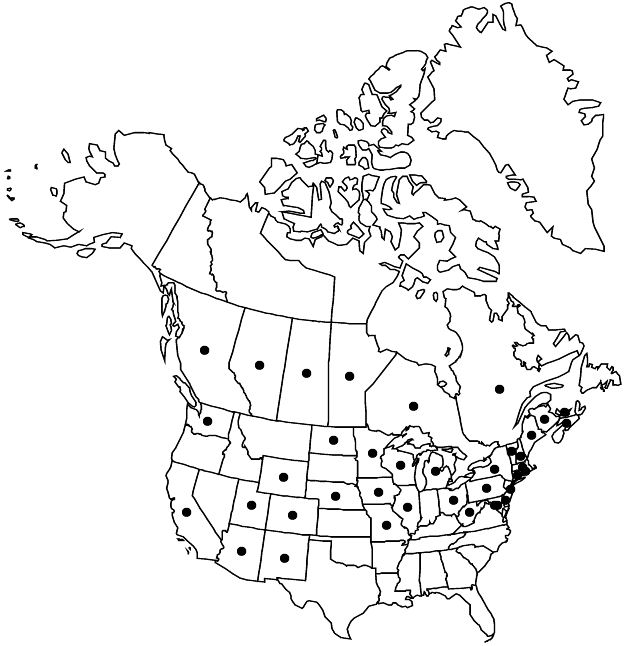Malva verticillata
Sp. Pl. 2: 689. 1753.
Herbs, annual, 0.5–2.5 m, glabrous or hairy, hairs usually stellate. Stems erect, usually stellate-hairy. Leaves: stipules persistent, ovate-triangular, slightly falcate, 4–7 × (2–)4–5 mm, usually papery; petiole shorter than to equaling or longer than blade, surfaces often glabrate abaxially, stellate-hairy adaxially; blade round to broadly reniform, unlobed or broadly, shallowly 5–7-lobed, 3–10(–25) × (2–)5–10(–25) cm, base cordate or sometimes ± not adnate to calyx, linear to lanceolate, reticulate-veined, 2–3 × 0.5 mm, to 6 × 1 mm in fruit, shorter than calyx, thin and translucent, margins entire, sparsely stellate-puberulent and ciliate. Flowers: calyx reticulate-veined, 4–6 mm, to 10 mm in fruit, lobes enclosing mericarps, papery, stellate-puberulent; petals pale lilac to whitish with lavender-pink tips, drying pinkish or whitish, or faded, veins not darker, 5–8 mm, subequal to or longer than calyx; staminal column 2 mm, usually sparsely hairy or glabrous, hairs minute; style 8–11-branched; stigmas 8–11 (same number as locules). Schizocarps 7–9 mm diam.; mericarps 8–11, 2.5–3 mm, glabrous, apical face smooth to obscurely reticulate at margins, not toothed or winged, lateral faces radially ribbed, very thin over seed. Seeds 2–2.5 mm. 2n = 84, 112.
Phenology: Flowering (May–)Jul–Oct.
Habitat: Disturbed areas, old gardens, roadsides
Elevation: 0–3000 m
Distribution

Introduced; Alta., B.C., Man., N.B., N.S., Ont., P.E.I., Que., Sask., Ariz., Calif., Colo., Conn., Del., D.C., Ill., Iowa, Maine, Md., Mass., Mich., Minn., Mo., Nebr., N.H., N.J., N.Mex., N.Y., N.Dak., Ohio, Pa., R.I., Utah, Vt., Wash., W.Va., Wis., Wyo., Eurasia, n Africa, introduced also in South America (Peru) and in temperate regions worldwide.
Discussion
Malva verticillata is commonly grown as a vegetable and medicinal herb. Variety verticillata is apparently native in eastern Asia, particularly China, and has a long history of cultivation there for use as a cooked vegetable and salad plant, and in traditional medicine. It differs from var. crispa Linnaeus in its flatter leaf blades and generally shorter stems. It has only rarely been found naturalized in North America; its garden use is increasing and it is becoming more frequently planted by eastern Asian immigrants. Variety crispa (with conspicuously undulate/ruffled/crisped leaves) is also grown as a vegetable and the leaves are sometimes used in salads. It is more commonly found as an escape or naturalized plant than the typical variety and it is sometimes treated as a species; it appears to be a selection derived from var. verticillata and is unknown in the wild. Variety crispa is more widely cultivated and naturalized in Europe and is naturalized in Asia.
Selected References
None.